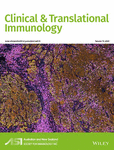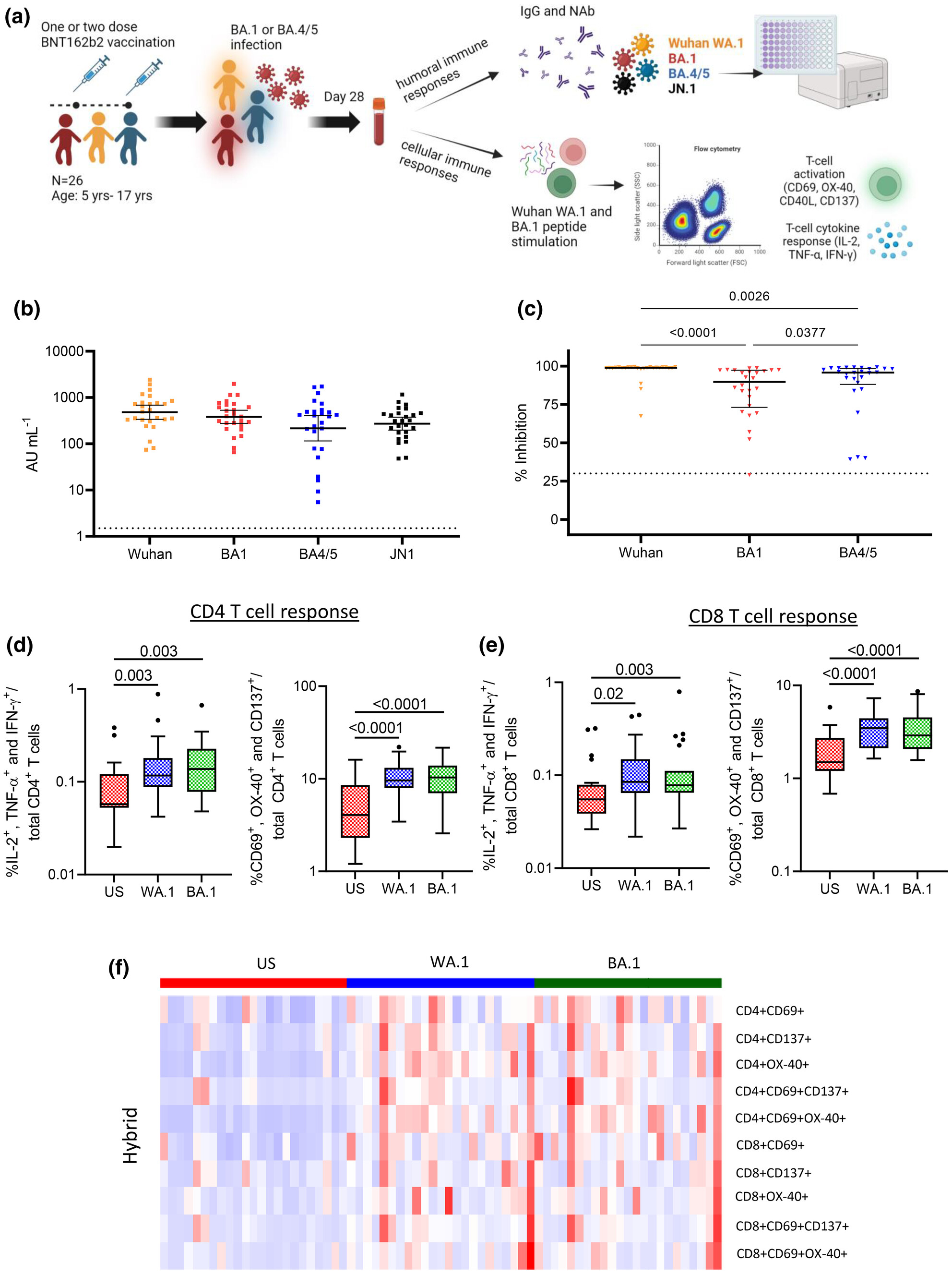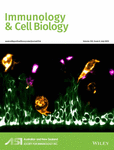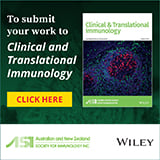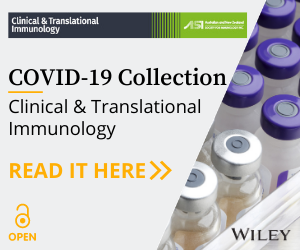Journal list menu
Export Citations
Download PDFs
Original Article
Characteristics of PD-1+CD4+ T cells in peripheral blood and synovium of rheumatoid arthritis patients
- First Published: 27 September 2024
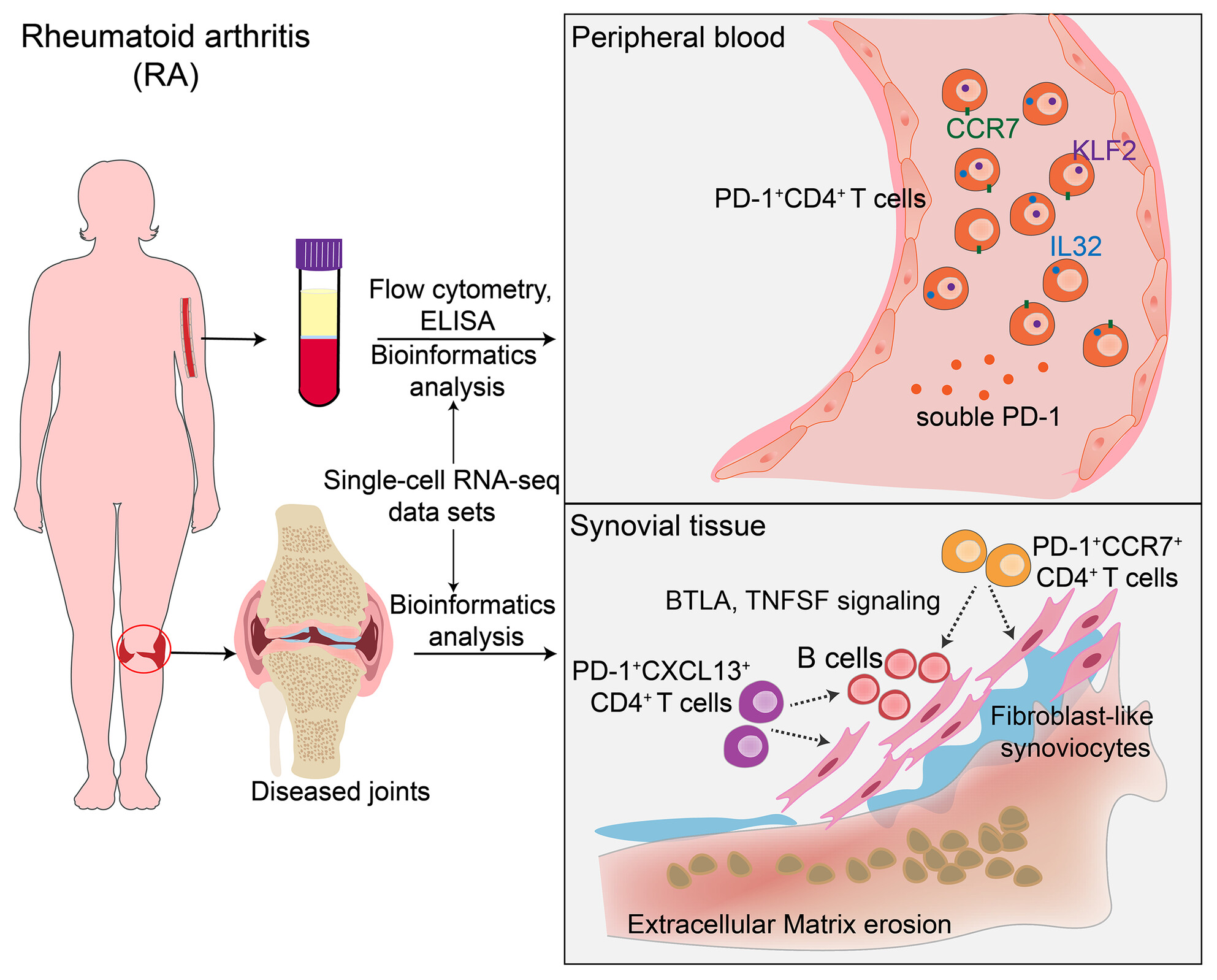
In the current study, we found that the frequency of PD-1+CD4+ T cells and the concentration of soluble PD-1 increased in peripheral blood of patients with rheumatoid arthritis (RA). In peripheral CD4+ T cells, PD-1 was co-express with CCR7, KLF2 and IL32. In RA synovium, CCR7+CD4+ T cells and CXCL13+CD4+ T cells expressed PD-1. PD-1+CD4+ T cells in RA synovium also appeared to interact with B cells and synovial fibroblasts through BTLA and TNFSF signalling pathways.
IL-15-induced CD38+HLA-DR+CD8+ T cells correlate with liver injury via NKG2D in chronic hepatitis B cirrhosis
- First Published: 03 October 2024

In this study, we found that CD38+HLA-DR+CD8+ T cells in patients with liver cirrhosis were significantly increased and correlated with liver injury. Then, our results revealed that these CD8+ T-cell subsets exhibited innate-like functional characteristics. Lastly, we found that IL-15 could promote the activation and proliferation of CD38+HLA-DR+CD8+ T cells, which had strong cytotoxic effects in a TCR-independent manner mediated by NKG2D.
Inhibitory effect of hydroxychloroquine on glucocorticoid-induced osteoporosis in lupus therapy
- First Published: 14 October 2024
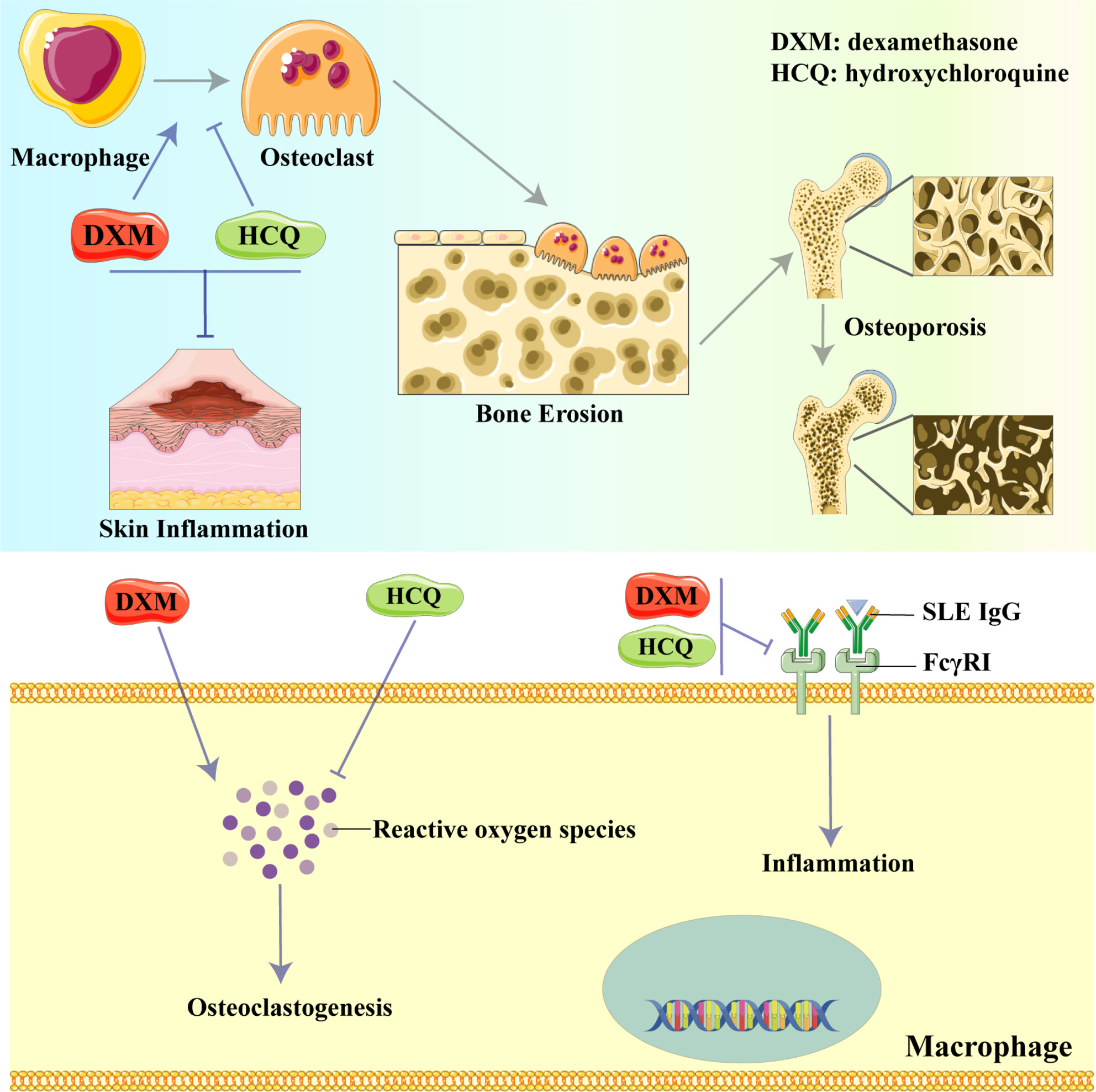
Our results suggest that hydroxychloroquine (HCQ) cannot ameliorate the acute inflammation induced by lupus IgG but inhibits osteoclastogenesis in experimental lupus. The mechanism underlying the inhibition of dexamethasone-induced osteoclastogenesis by HCQ is through the regulation of nuclear factor erythroid 2-related factor 2 expression and reactive oxygen species production.
Lymphocyte activation gene 3 served as a potential prognostic and immunological biomarker across various cancer types: a clinical and pan-cancer analysis
- First Published: 04 October 2024
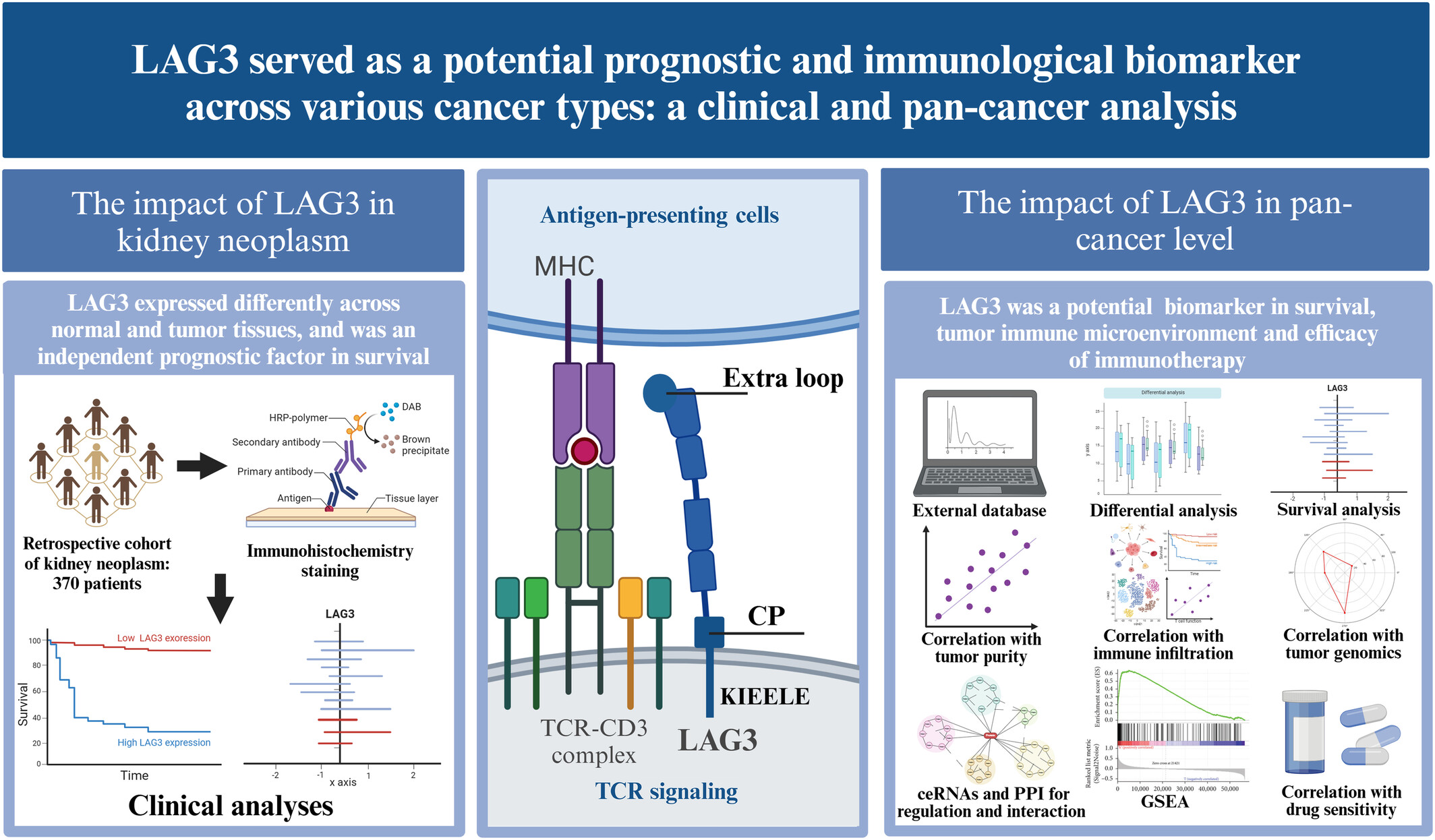
In this article, we revealed lymphocyte activation gene 3 (LAG3) gene expression as an independent unfavourable factor for both overall survival and progress-free survival in kidney neoplasm and exerted a significant impact on the prognosis of many other cancers. Besides, LAG3 served as a biomarker for the tumour microenvironment, which featured high infiltration but low function. We proposed that high LAG3 gene expression might be correlated with elevated immune infiltration with exhausted phenotypes.
Naturally acquired adaptive immunity to Streptococcus pneumoniae is impaired in rheumatoid arthritis patients
- First Published: 15 October 2024
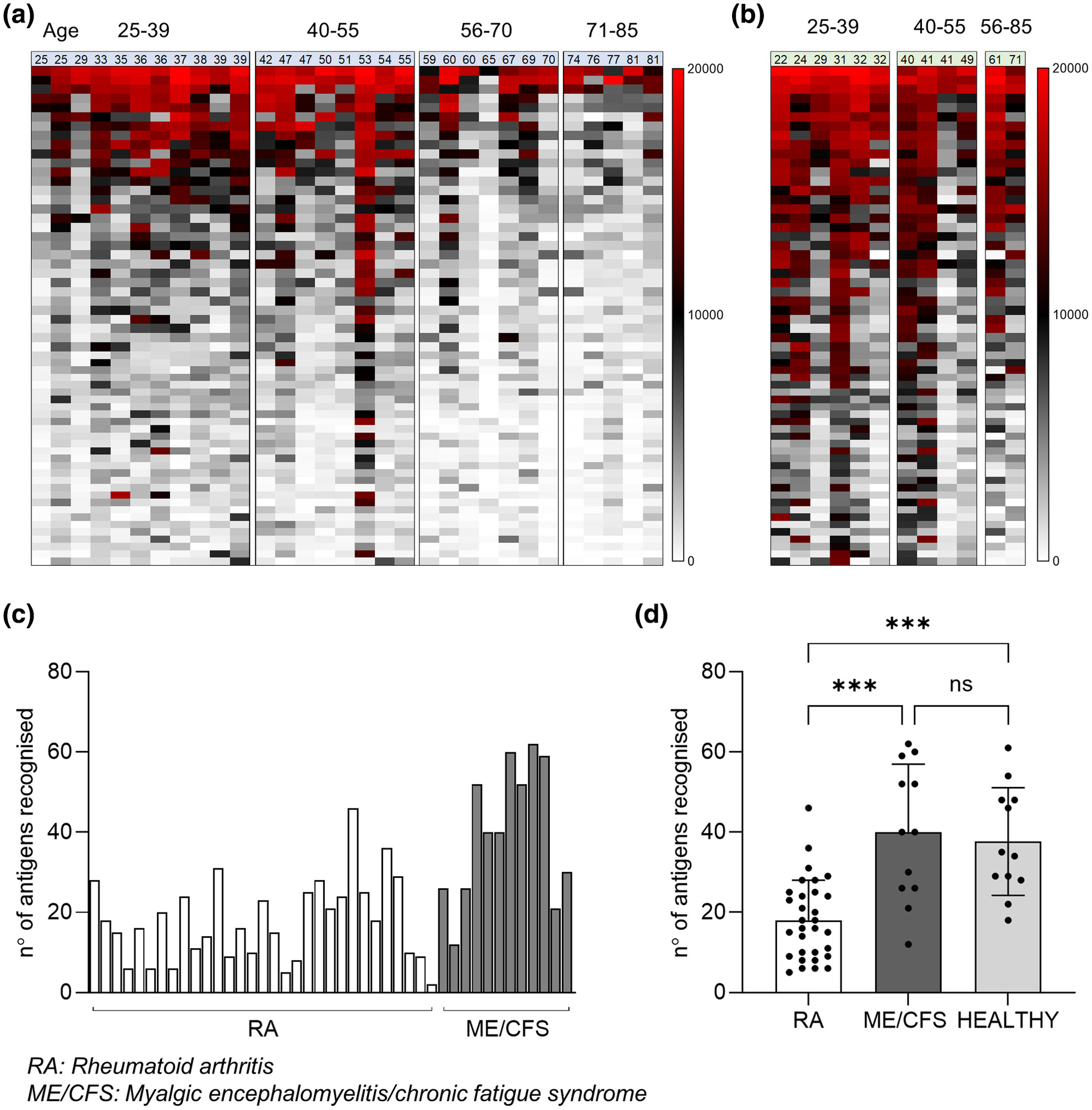
The study highlights reductions in the level of IgG to pneumococcal proteins in sera from rheumatoid arthritis (RA) patients independent of total IgG levels, indicating one reason why RA patients have a high incidence of Streptococcus pneumoniae infections and pneumonia. This impairment of naturally acquired IgG to S. pneumoniae protein antigens was present in RA patients before B-cell depletion treatment, although treatment with rituximab was associated with a dysregulation of the antibody responses in some patients as well.
Targeting CD38 with monoclonal antibodies disrupts key survival pathways in paediatric Burkitt's lymphoma malignant B cells
- First Published: 03 October 2024
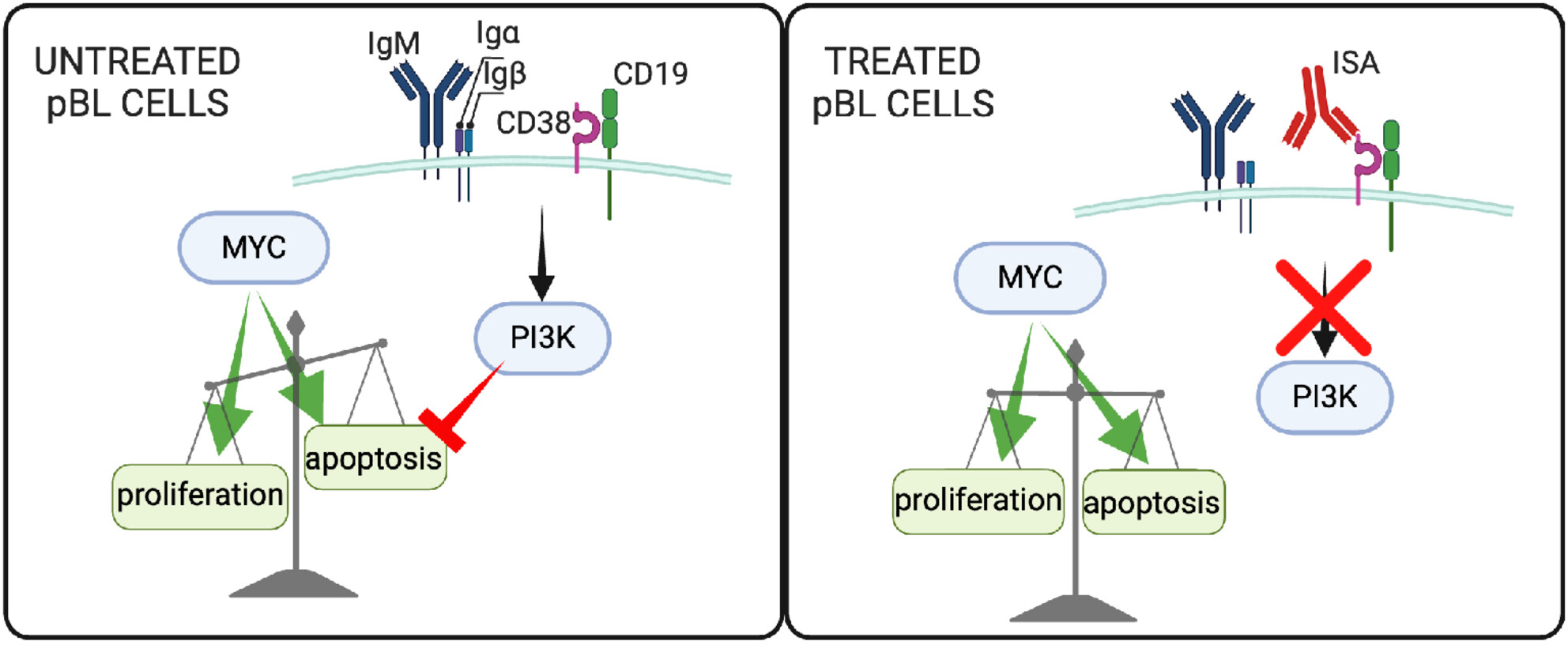
This study identifies CD38 as a potential target for treating paediatric Burkitt's lymphoma. We compare two monoclonal antibodies targeting CD38, finding isatuximab more effective than daratumumab in reducing cell proliferation, inducing apoptosis and impacting key survival pathways in lymphoma cells.
Humoral and cellular immune responses in vaccinated and unvaccinated children following SARS-CoV-2 Omicron infection
- First Published: 03 October 2024




